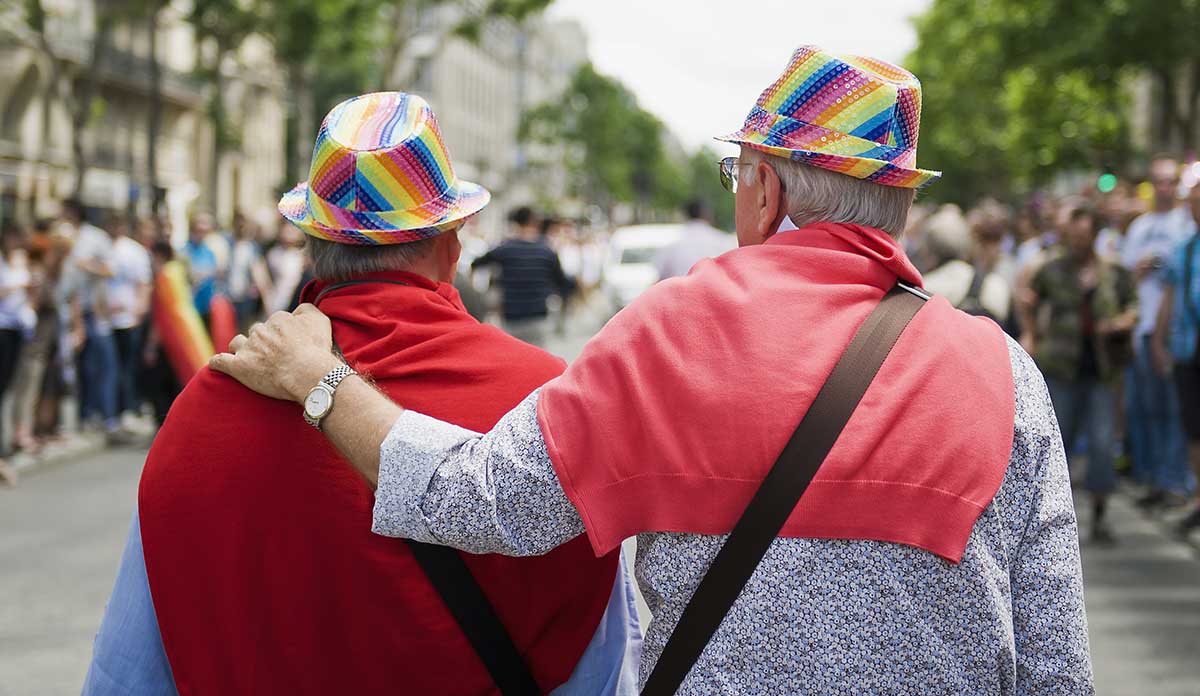June is a month for celebrating diversity in love and sexuality. As we celebrate Pride Month, it’s important to recognize older adults can also be members of the LGBTQ2+ community, and that there’s a possibility that some of the clients you work with could be lesbian, gay, bisexual, transgender, queer, two-spirited, or another member of this often marginalized community.
It’s important to be mindful of our actions and words as our clients were raised in a society without an established LGBTQ2+ community. To ensure we provide inclusive person-centred care, we must be sensitive and stay open-minded.
Remember that as a PSW, clients rely on you for physical and emotional support. It starts with you to ensure they continue to feel at home.
Some ways to do that are:
1. Communicate and accept them for who they are.
Coming out is hard, especially for older adults who have experienced violence against the LGBTQ2+ community for many years, and may worry about how they will be seen by you, their PSW. To ensure the clients you care for feel safe, make sure your communication and acceptance is clear by listening to them and avoiding any micro-aggressions. For example: when communicating with them always ensure you are referring to them by the right pronoun. You can do this by asking them what pronoun they prefer (they/ he/ him/ she/ her) when you first meet them. They may “test” the situation by bringing up a subject around their sexuality or gender expression, and see how you react. If you roll your eyes or change the subject, they will likely feel that you are not accepting and may not feel safe. It’s also important not to dismiss their partner as ‘a cousin’ or ‘a close friend’.
2. Don’t stereotype.
Understand that depictions of members of the LGBTQ2+ community are often over-exaggerated on television or in movies. Do not assume your client will act a way because of their sexuality or gender expression. Remember that members of the LGBTQ2+ community are diverse and that each person has their own personality. Even though a client may not seem like your ‘typical’ LGBTQ2+ member, always give them respect by referring to them by the right pronoun, and by believing them when they identify as being a member of the LGBTQ2+. Questioning whether the person you care for is part of the LGBTQ2+ community will only make them feel isolated and uncomfortable.
3. Self-reflect and be self-aware
To ensure your client receives the best care, do some self-reflection. Ask yourself: ‘how can I make sure they feel safe?’ And ‘am I doing anything that makes them uncomfortable?’ If you have trouble answering those questions, the best solution is to ask these questions to the client you’re caring for. Always ensure you have an open mind when seeking answers to these questions. Asking them these questions and following through will also show them that you are taking steps to ensure they’re accepted and comfortable.
Your body language is also a form of communication. When the subject of LGBTQ2+ comes into conversation, be aware of what your body is communicating. For example: when they talk about the LGBTQ2+, and your arms are crossed or you don’t make eye contact with them while they speak, they may feel dismissed or uncomfortable. If you feel as though your body language does not match your acceptance of your client, always clarify with your words by letting your client know that you accept them for who they are.
4. Provide non-judgmental emotional support
Ensure you provide non-judgmental support by listening to their concerns and being there to comfort them when needed. You can do so by ensuring you don’t invalidate their feelings. Do not dismiss or downplay their feelings, be more supportive and validate their feelings. For example, if they talk about feeling discriminated against do not accuse them of over exaggerating the situation, validate their feelings by keeping an open mind and providing empathy.
5. Stay educated
Don’t expect or pressure a client to educate you about the LGBTQ2+ community. You can show them that you care by educating yourself on the history of the LGBTQ2+ community, and try to understand the issues they’re passionate about, while always staying open-minded.
Here’s a video we put together that explains what each of the letters of the LGBTQ2+ acronym stand for, and the flags that are associated with this community:
—
Remember that we are all humans, no matter our sexuality or gender expression. Each person that we care for deserves to be treated with dignity and respect, and should feel comfortable receiving care.
Thank you for caring for our clients. As we celebrate Pride Month, let’s all step up and continue to provide safe and inclusive care to all our clients!

